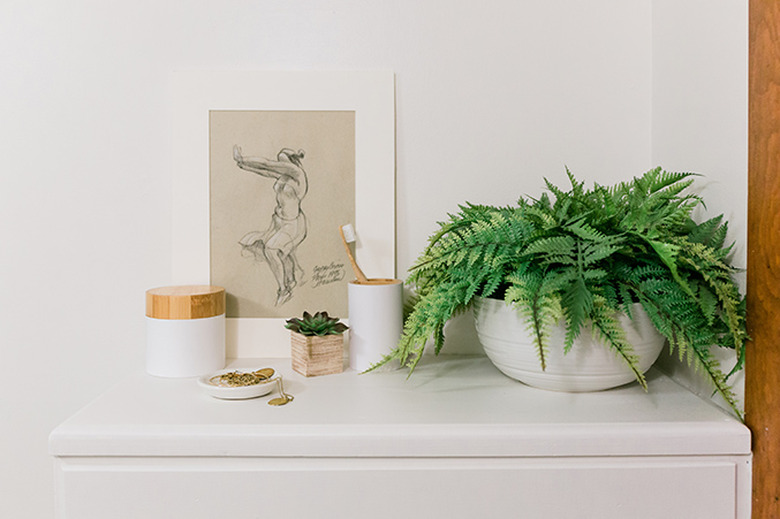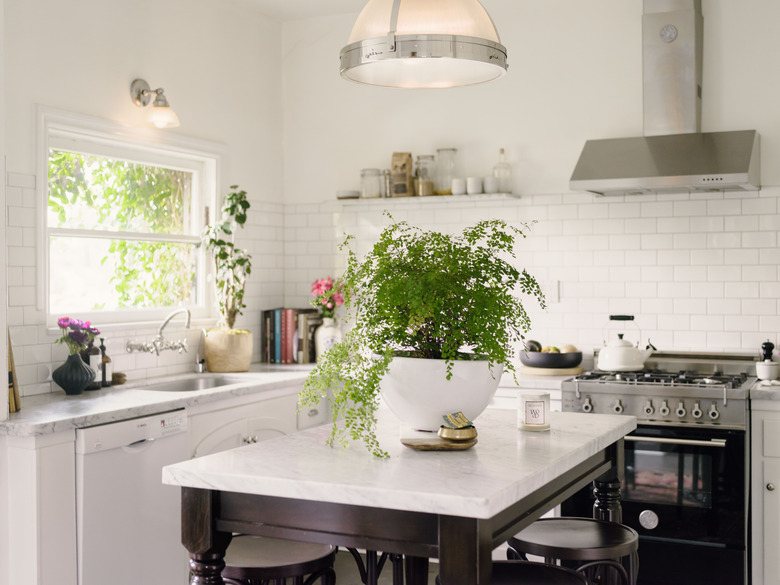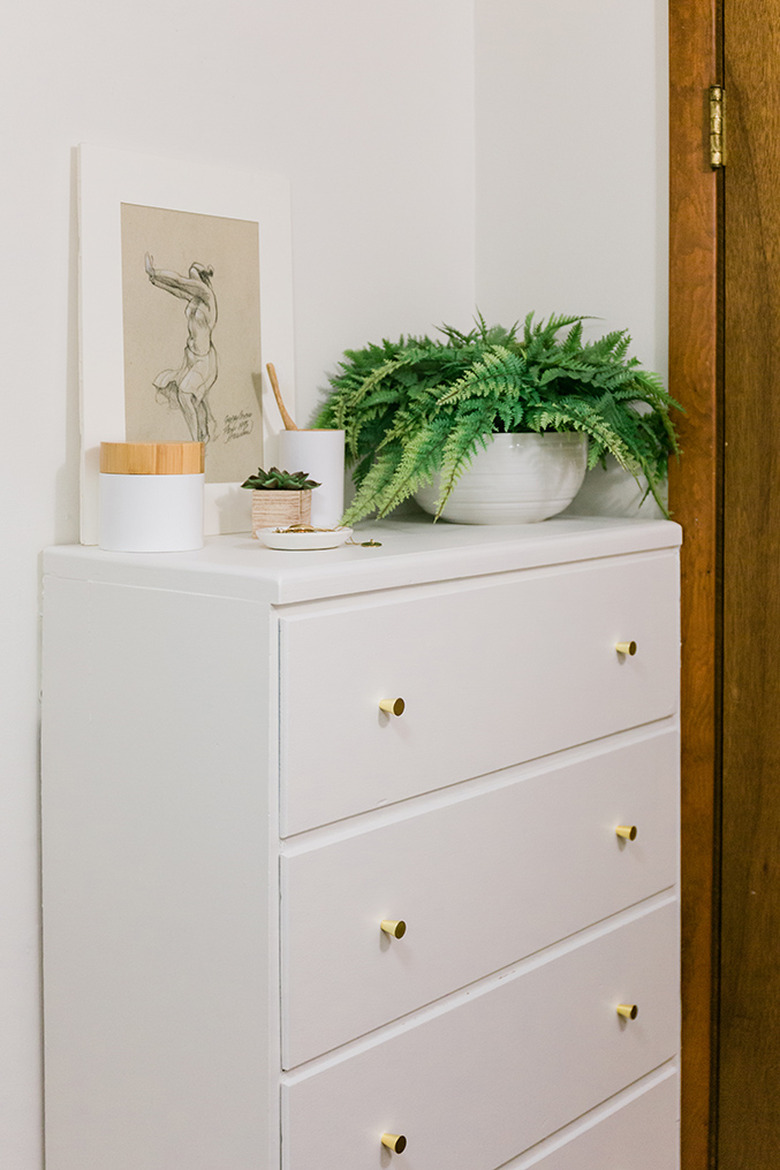Time To Stock Up On Ferns: Top 6 You Should Highly Consider
Ferns have been around for millions of years, but they've never been more popular as they are today. These unique plants are constantly trending as the must-have houseplants thanks to their lacy foliage, easy-care ways, and endless variety. (Not to mention their air-purifying power.) And we at Hunker are all for it. There are some 12,000 varieties out there, making it difficult to pick one or two for new houseplants. Luckily, we've made it a little easier for you by highlighting six top fern options you can't (and shouldn't) resist.
1. Maidenhair Fern
1. Maidenhair Fern
Airy and fresh are the words that come to mind when you see a maidenhair fern. Its pinnately divided fronds and delicate, fan-shaped leaflets seem to float like small green clouds on their dark, wiry stems. You can find native maidenhair ferns, like American maidenhair fern (Adiantum pedatum) or beautiful imports like the delta maidenhair fern (Adiantum raddianum). All offer plants of lacy beauty that prefer moist soil and thrive in low-light areas.
2. Rabbit's Foot Fern
2. Rabbit's Foot Fern
The rabbit's foot fern (Davallia fejeensis) is a Fuji native, an epiphytic evergreen fern that grows in the wild on trees or in rock crevices. This fern's fronds are classically lacy, attached to thin stems. Why does it have the common name rabbit's foot or hare's foot fern? That's because of the thick rhizomes that are covered with fuzz and shaped like the foot of a rabbit. They grow on the soil surface, creeping over and down the sides of the pot. This plant is perfect in a hanging basket where the "rabbit foot" rhizomes are easy to spot. Keep that soil moist and spray the fronds and rhizomes with water frequently.
3. Boston Fern
3. Boston Fern
The Boston fern (Nephrolepis exaltata) may be America's favorite. This luxurious and voluptuous fern has played a starring role in living rooms and patios all over the country for decades. It offers graceful, arching branches and soft fronds in a brilliant emerald green. But that's not all these easy-care ferns provide. They are also among the most efficient plants for removing toxins (like toluene and xylene) from the air. Like with most other ferns, you'll want to keep that soil moist and offer indirect sun exposure.
4. Button Fern
The button fern (Pellaea rotundifolia), also known as round-leafed fern, is sure to attract attention. This eye-catching New Zealand native looks great inside in a hanging basket where its cascading leathery leaflets are on display. This shade-loving plant is unlike any other fern you might own, with small, round, velvety leaves that don't require the humidity most ferns crave. But they don't mind humidity either and will grow perfectly happily in your bathroom. Foliage clumps can get to 18 inches high and make a real statement in any room of your house.
5. Bird's Nest Fern
5. Bird's Nest Fern
The fronds of bird's nest fern (Asplenium spp.) look like wavy swords, uncoiling outward from a central rosette. Each bright-green frond can grow up to 2 feet long and looks like it might be just as happy on a desert island as in your living room. Anyone who likes tropical plants will consider the bird's nest fern a must-have plant with its lush, ripply fronds. Many bird's nest ferns grow in the wild as epiphytes on trees in dark forests, but they will be happy lighting up a corner of your home as well. These unusual plants are just fine with only occasional exposure to indirect light.
6. Cretan Brake Fern
6. Cretan Brake Fern
Cretan brake fern (Pteris cretica) has luxuriously long, arching fronds that explain its other common name: ribbon fern. This fern is native to the old world tropics, but it is one of the lowest maintenance ferns you'll find in commerce, growing happily to 2 feet by 2 feet in partial or even full shade. Many Cretan brake ferns have gorgeously variegated fronds with white striping that make them look harder to grow than they are. Like other ferns, they like moist, well-draining soil. You'll do well to keep it in a clay pot to keep the roots cool. Place the pot on a tray of wet pebbles.
References
- Britannica: Ferns
- Fern Nursery: Fern History
- Mulhalls: Maidenhair Fern
- Illinois Wildflowers: Maidenhair Fern
- Missouri Department of Conservation: Maidenhair Fern
- Epic Gardening: Birds Nest Fern
- House Plants Expert: Birds Nest Fern
- Gardenista: Gardening 101 Button Fern
- Monrovia: Button Fern
- Costa Farms: Boston Fern
- Missouri Botanical Garden: Pteris cretica
- Missouri Botanical Garden: Davallia Fejeensis
- Green Obsessions: Rabbit Foot Fern
Before You Go ... Some Fascinating Facts About Ferns
Ferns were among the first plants on Earth and are true survivors. They appeared over 300 million years ago in the Paleozoic Era and shared the planet with dinosaurs. The dinosaurs went extinct but the ferns survived, and thrived.
There are over 10,000 fern species on Earth today. Many have lacy leaves (called fronds) but the shapes and colors and textures are wildly, creatively, and fabulously distinct. Some are less than half an inch tall while others soar to 80 feet tall. Some twine like vines while others float on ponds. Their fronds show intricate detail and complex repeating patterns that captivate us. Ferns also purify the air around them, making them exceptional houseplants.



